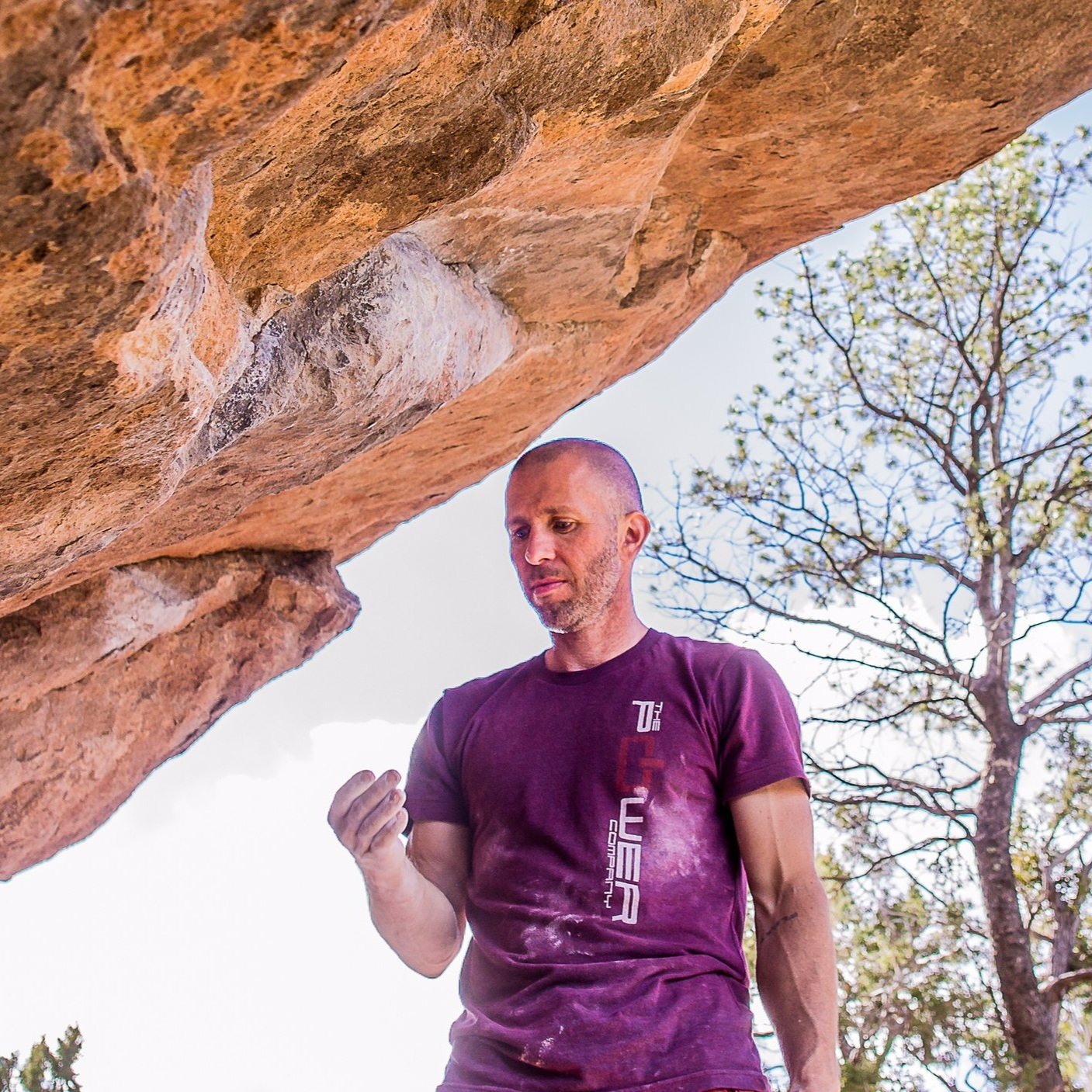PSA | Is Your Climbing Chalk Ruining the Rock?
A couple of days ago I saw an Instagram post that showed a box of chalk blocks from the mountain equipment company C.A.M.P.. They were advertising that their chalk contained rosin. I at first thought this was a joke product - I assumed that most climbers were aware of the issues that rosin has been accused of causing on rock, and that it was widely frowned upon. A quick search showed that it wasn’t a joke, and this product is available at many online retailers. I shared the post, questioning how a product like this made it all the way to store shelves, and I was pretty surprised by the responses. Many people just assumed it was a good idea - that rosin in chalk sounds like a good idea, and they were excited to try it. The majority of those people expressed surprise when I relayed what I’d heard about the use of rosin on rock, and thanked me for the info. I assumed everyone knew. Hence, this PSA.
So first let me say this: All I REALLY have here is anecdote. But that’s also all we have when we assume that brushing holds helps. We actually do have science that says if a hold is already chalked up, we lose friction by also chalking our hands, but we continue to chalk our hands before climbing anyway. Speaking of which, we’ll be looking at that science on the Breaking Beta podcast later this season - stay tuned.
So, is anecdote and common sense enough? It is for me, but let’s explore it a bit and you can come to your own conclusions.
Like any other issue that isn’t cut and dry - and many that are - the debate around the use of rosin has two sides. The most heated arguments are based in the forests of Fontainebleau, where rosin - or resin - is known as pof. It was first used there sometime in the early 1930’s, and is used specifically to make climbing on the slopey sandstone more manageable - to increase friction.
The way it was then (and still sometimes is) used by the “Bleausards” - as the locals are known - is that dried chunks of tree resin are wrapped and tied into the end of a rag, and that rag is hit against the rock on both hand and footholds, as well as on shoes. It makes a “pof” sound when hit, hence the name.
Many people claim that this pof eventually creates an even more slippery, black surface in places where it’s overused, and the only way to get friction there is to use more pof. Of course, the Bleausards put the blame on chalk - saying that once it came into prominent usage, it began to fill in the pores of the soft sandstone and caused a slick surface, not to mention the unsightly white blotches everywhere.
We do know that chalk can have an adverse effect on friction when used in excess, and while I couldn’t find any research on the specific results of pof or rosin on friction, I did find a study that looked at compression deformation in the same Fontainebleau sandstone. They very specifically used a thin layer of pine resin on the rock to create an impermeable-to-liquid, flat, and smooth surface for their testing. Also, this same pine resin is the key ingredient in many varnishes because it does, in fact, dry to a very hard, protective, smooth surface.
Fontainebleau is home to what might be the world’s best bouldering. It’s also home to pof.
I’m definitely not saying that chalk is more environmentally friendly - it has it’s own issues - just that pof, resin, or rosin - whichever name you choose to call it - is the likely culprit when it comes to smooth, glassy holds in Font. Of course, there’s also the pof + chalk mixture to contend with. Who knows if that makes it even worse.
Regardless of which evils are the worst evils, the climbing community in general - particularly outside of Font - has largely been against the use of pof and has largely accepted chalk usage, (though again, that’s something we should look deeper into, along with whether brushing after every attempt is actually helpful).
Now - this episode is not some rant against C.A.M.P. for producing the chalk, though I do think they should have been more aware of the stance shared by most experienced climbers. The company 8cPlus (not to be confused with 8b+) makes a similar type of block chalk with rosin in it, and I’m sure there are others. But block chalk isn’t the only issue we need to be aware of. Liquid chalk is of particular concern - especially since the pandemic caused many gyms to go liquid chalk only, which dramatically raised the demand for liquid chalk. It’s also very easy to find white label liquid chalk, and many companies did exactly this to cash in on the demand. Many of these white label liquid chalks - you guessed it - contain pine resin. This is largely because it’s cheaper to produce liquid chalk with resin in it as a thickener that holds the chalk particles in suspension. This type of liquid chalk has long been used by musicians, athletes, and many others to increase the dryness while improving grip - and if they want to cake their violin or discus with resin, then that’s their prerogative. However, it’s not hard to imagine how this rosin-infused liquid chalk could very easily end up outdoors, caking the holds of popular routes and boulders.
But even indoors, where new holds, in my opinion, could use some loss of texture and friction, it’s caused some issues. In a Climbing Magazine article, author Hannah Mitchell writes, “Route setters claimed that in as little as one to two weeks, V2 blocs would become anywhere up to V5 climbs simply because of the lack of friction. The introduction of resin-free alternatives has brought about a welcome reduction in the time and cost associated with the deep-cleaning methods that are required to remove resin.”
Now, for the sake of training, I view polished indoor holds as a good thing, but the gyms may not, and we certainly don’t see it that way outside.
As I went exploring, I was surprised at the number of companies who put rosin in their liquid chalk. Black Diamond, Petzl, Mammut, and others; while some companies, like Friction Labs, Evolv, and Wild Country, are specific about the fact that they don’t use rosin. There are also companies out there like Midnight Lightning and Chalk Rebels who are doing their best to be as eco-friendly as they can, and openly speak out against resin usage. Many companies make no mention at all and don’t publish their ingredients list in an easy-to-find place, so I’m not going to try to give an exhaustive list. You should check for yourself.
And that’s one thing that maybe C.A.M.P. and these others I mention do a good job of: you know what you’re getting. They aren’t trying to hide it at all.
If you’re on the hunt to see if your liquid or block chalk contains resin or rosin, also be sure to check for the ingredient “colophony”. Same stuff. And if there is an ingredient you don’t recognize, do some searching to find out what it might be.
I mean, we are smearing this stuff all over the rocks we hold so dear, so maybe we should know a little more about it.
Basically, It’s up to you. Make your own decisions with the knowledge that the general climbing community - regardless of what these companies are selling - frowns upon rosin usage in the outdoors, and chalk is something we still need to grapple with.
Check out these articles and forums discussing the use of pof and rosin in climbing and climbing chalk:
https://www.ukclimbing.com/forums/bouldering/fontainebleau-457439
https://lerockyroad.com/to-pof-or-not-to-pof
https://www.bergzeit.co.uk/journal/info-about-zum-fontainebleau-bouldering/
https://www.climbing.com/gear/liquid-chalk-vs-powder-chalk/
https://www.midnightlightning.co/removing-rosin-from-liquidchalk



















Whether a pro, writer, filmmaker or coach, Taylor has some advice for you.